The Galápagos Archipelago
Locations we visited during our trip in 2022
The Galápagos Archipelago consists of 13 major islands in the Eastern Pacific.
The Galapagos Archipelago, first discovered in 1535, was famously described by early explorers as “The Enchanted,” a reference to its remote and mysterious beauty. Among its most striking inhabitants were the large Galapagos tortoises, roaming freely across the islands. However, this discovery marked the beginning of centuries of human interference.
For nearly 300 years, poaching and exploitation severely disrupted Giant Tortoise populations, particularly during the 18th and 19th centuries. These pressures pushed several tortoise species to the brink, altering the delicate balance of the archipelago’s ecosystem. [1]
Our visit to the Galapagos was to observed and learn about the impact of how tourism and invasive species were brought by the traffic of humankind.
Part of our travel group to The Galapagos along with our Naturalist guide, Venus. She taught us about the local culture and the impact of rising tourism on the area and it’s wildlife, most of which are found no where else in the world.
The Marine Iguana
The Marine Iguana, also known as the Sea Iguana, is a unique marine reptile that can only found at The Galapagos Islands. Unlike other lizards, it forages in the sea for algae. [2]The marine iguana diverged from land iguanas approximately 8-10 million years ago. Since the colonization of the islands, the breeding numbers of marine iguanas have been disrupted and their nesting zones have been affected. Additionally, the introduction of cats and dogs (large prey) to the islands has greatly affected their population and survivability. There are between 200,000 - 300,000 marine iguanas left.[3]
The marine iguanas found in the Galapagos can reach a length of 6 feet and are available in various colors such as bright pinkish-red, gray, black, and turquoise markings. These iguanas are categorized as "vulnerable" due to their high risk of extinction in the wild.[4]

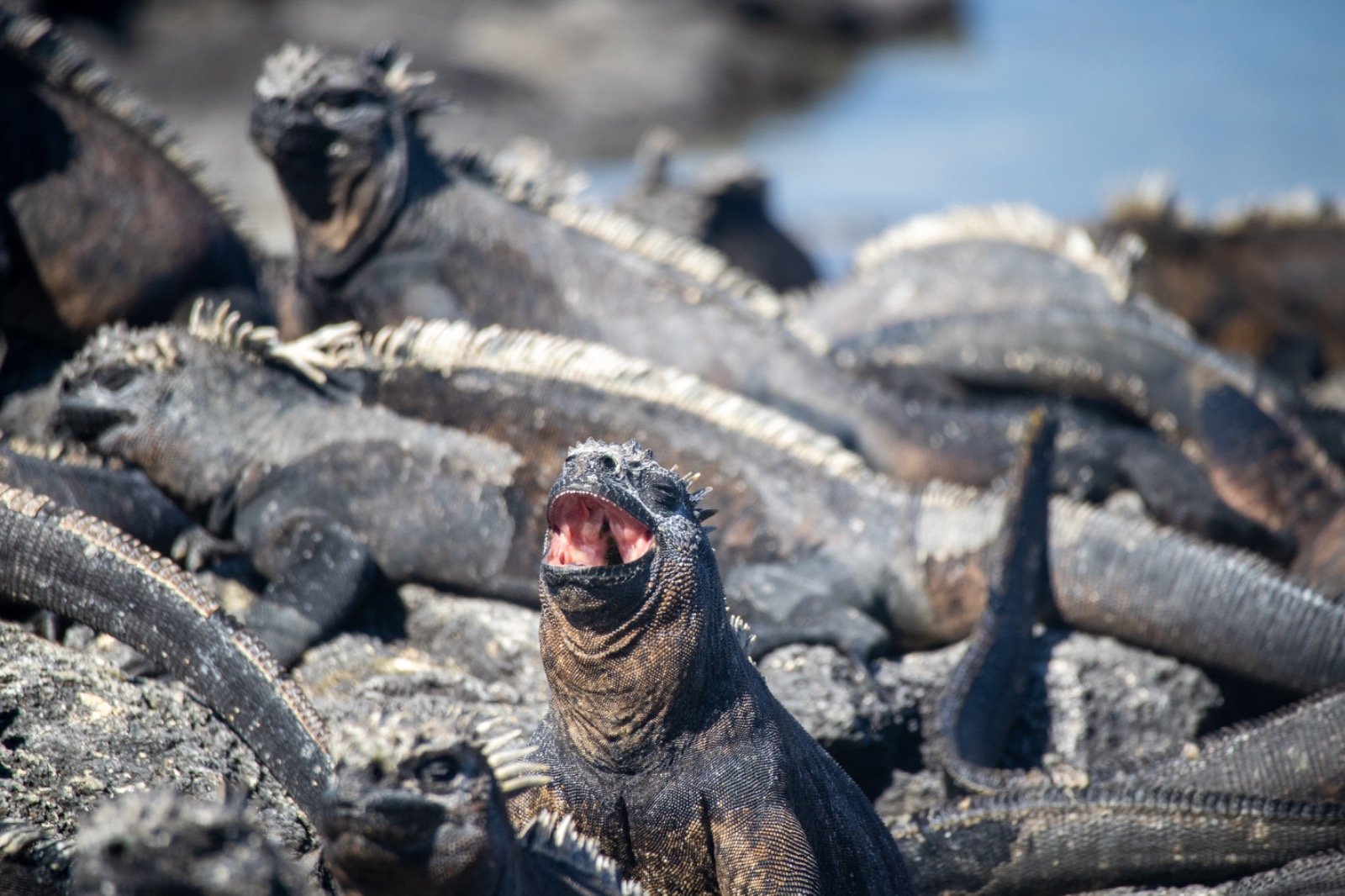
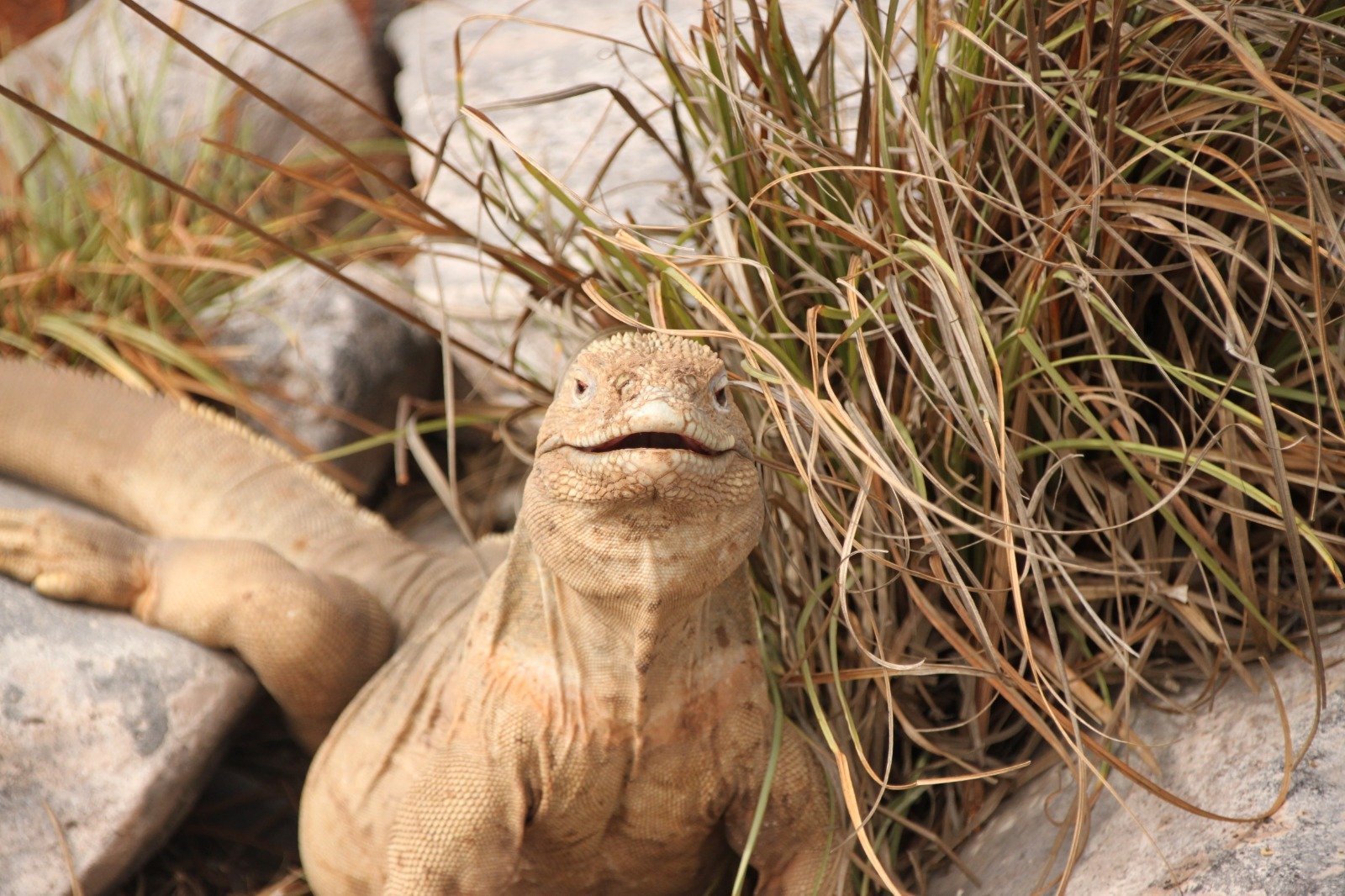
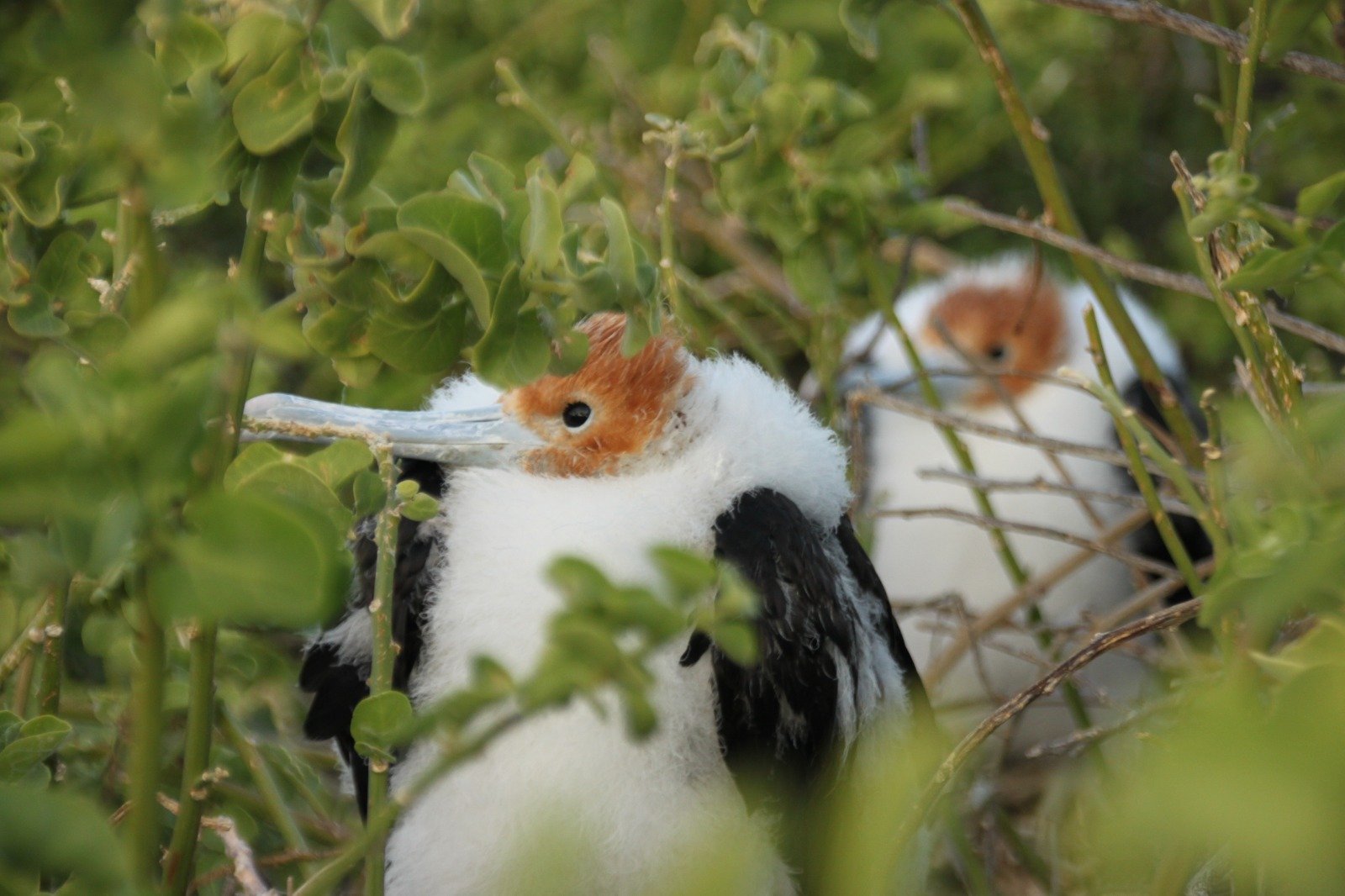
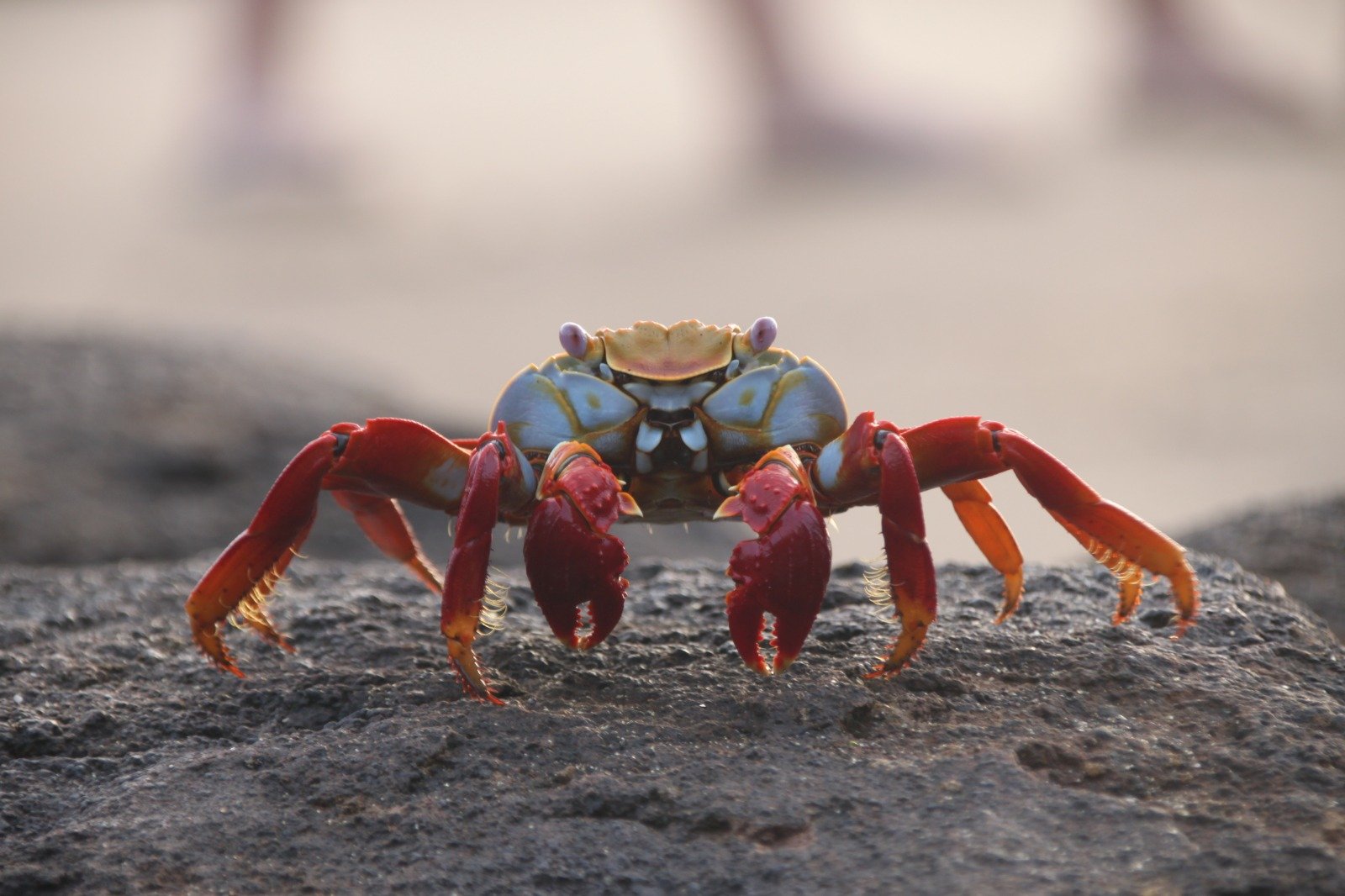
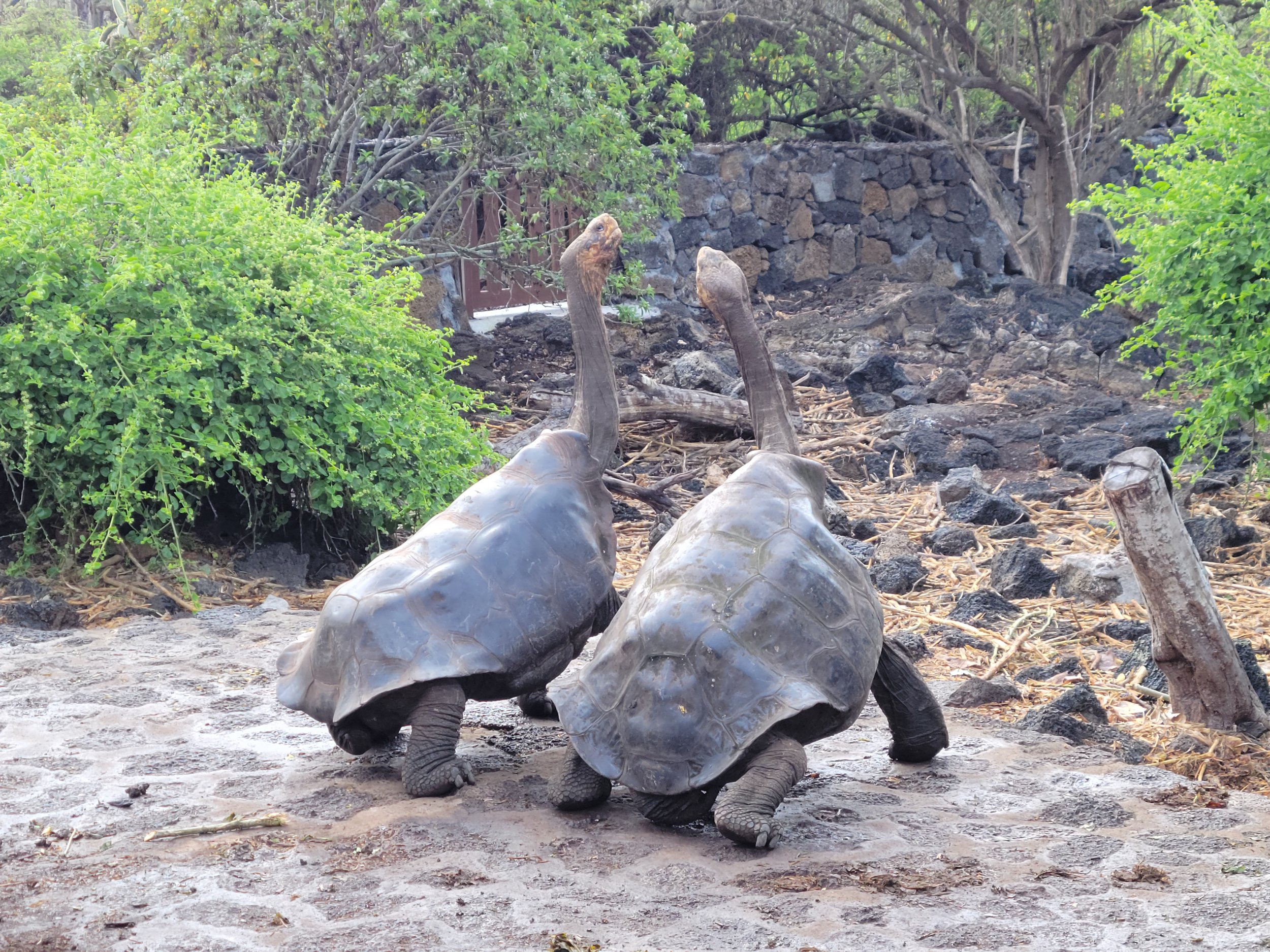
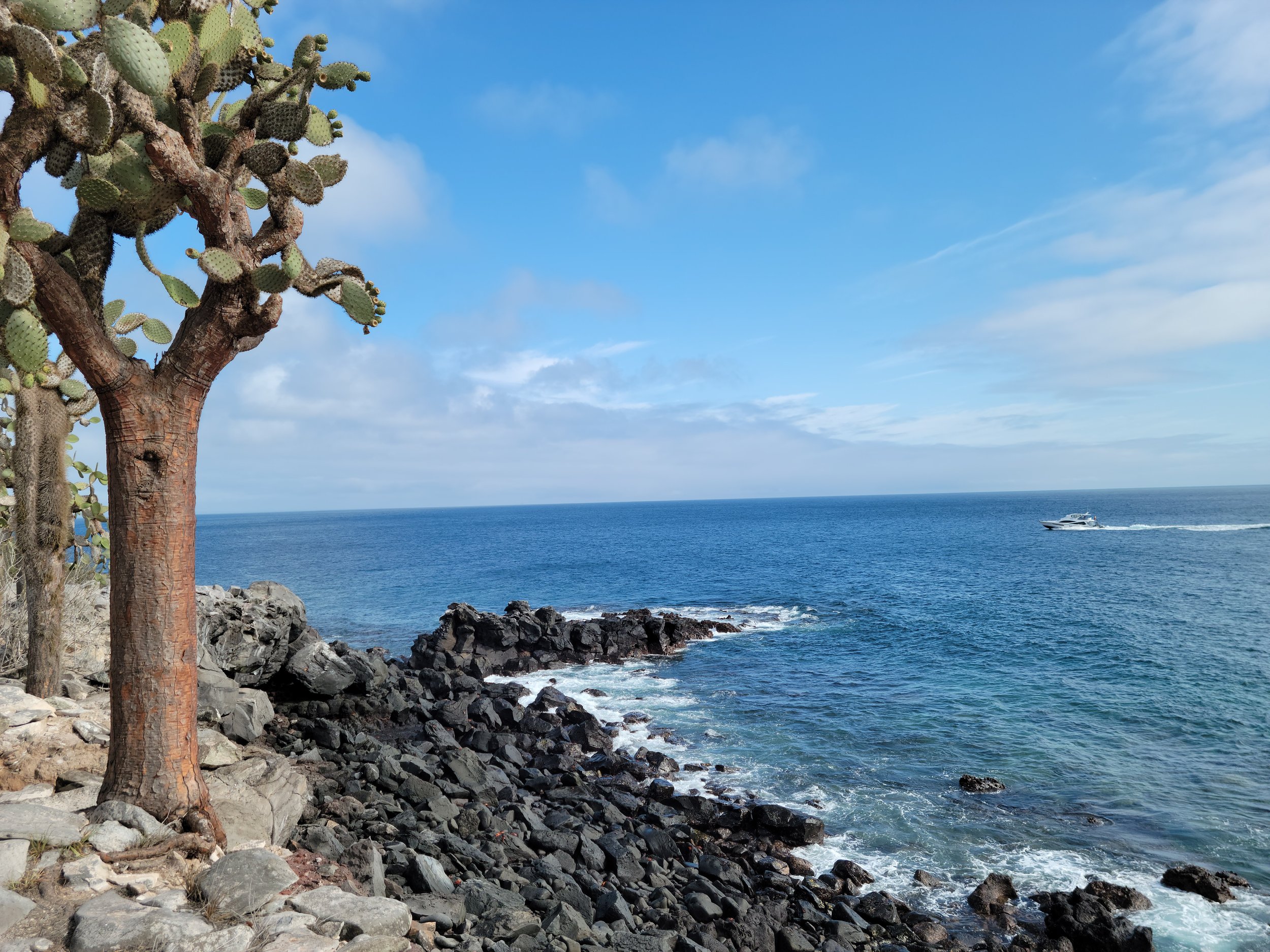
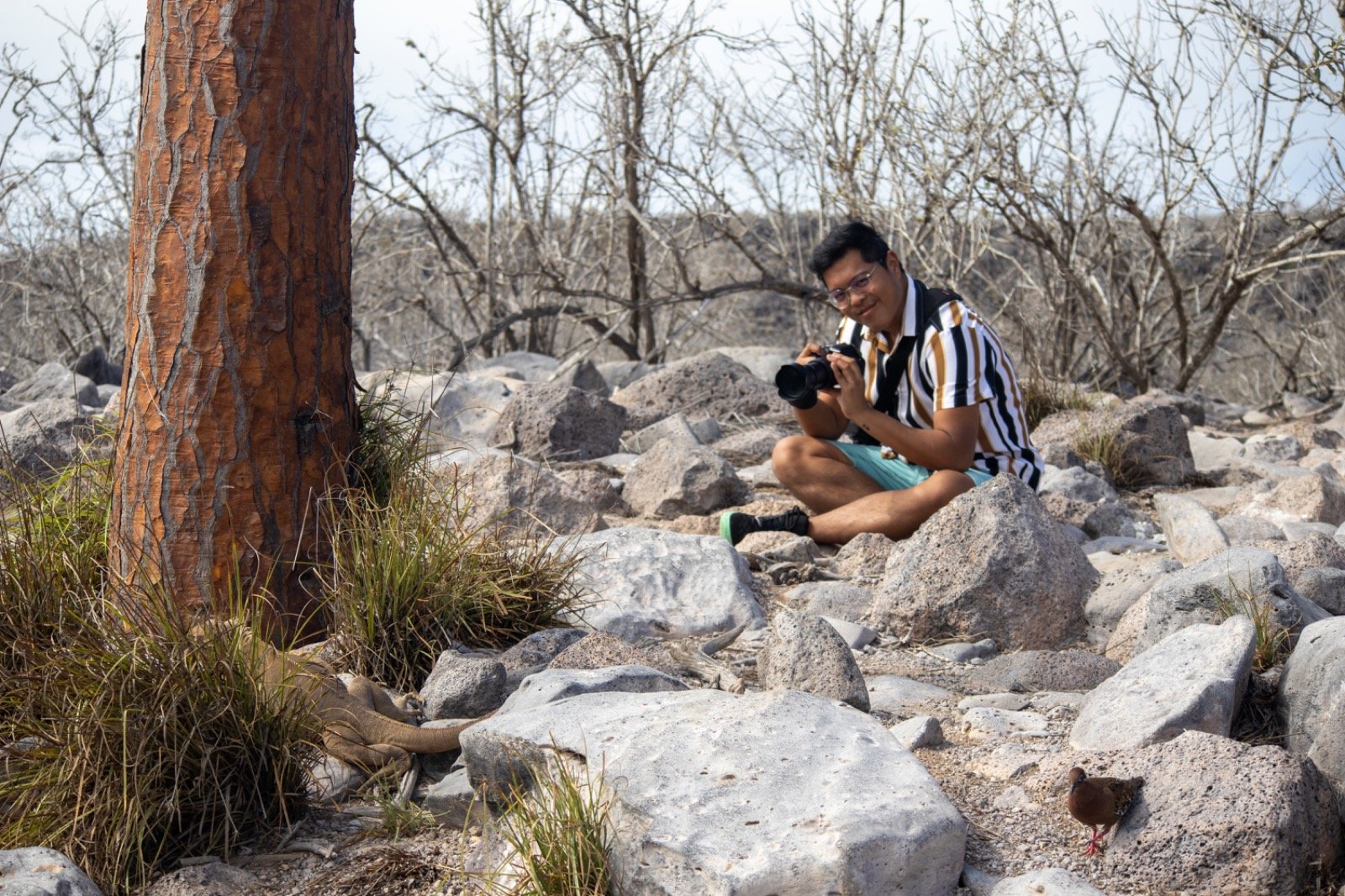
The Giant Galapagos Tortoise
Scientists’ combined efforts to protect Giant Tortoises’ (The Chelonoidis Niger) habitats and study their migration patterns have led to increased tortoise populations and conservation. Endemic only to Galapagos, the Giant Tortoise population is around 15,000; with 13 different subspecies discovered to date.[5]
The long-term goal of the Giant Tortoise Restoration Initiative is to restore all tortoise populations to their historical numbers. When the Galapagos National Park was established in 1959, there were 11 surviving tortoise species.[6] The historical population of Tortoises throughout the Archipelago was between 200,000-300,000, and the current population remaining is 10-15% of that. One method of rebuilding these populations is collecting eggs or newborn hatchlings from natural nests and nursing the young in captivity before releasing them back to their islands of origin.[7]
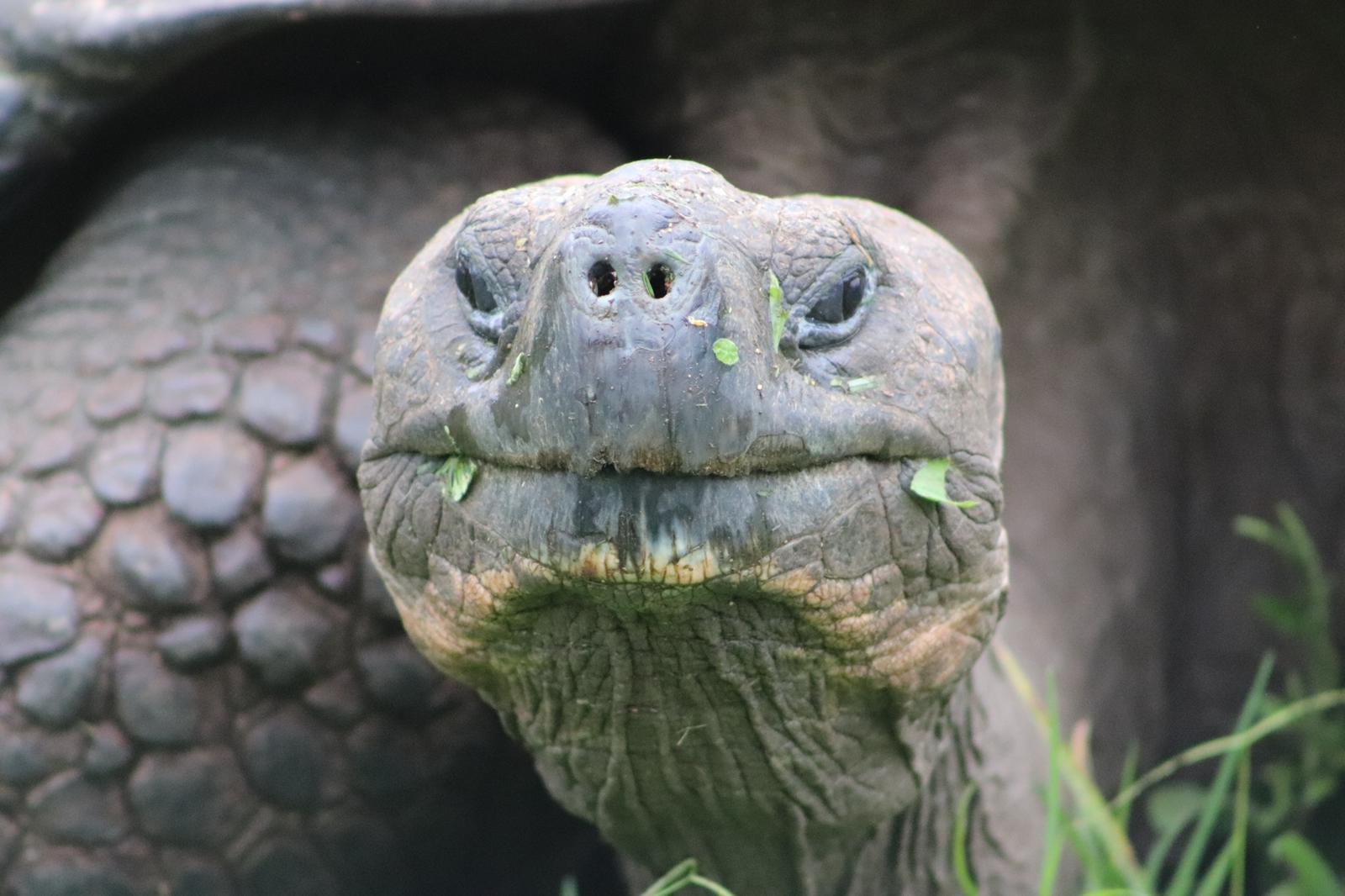
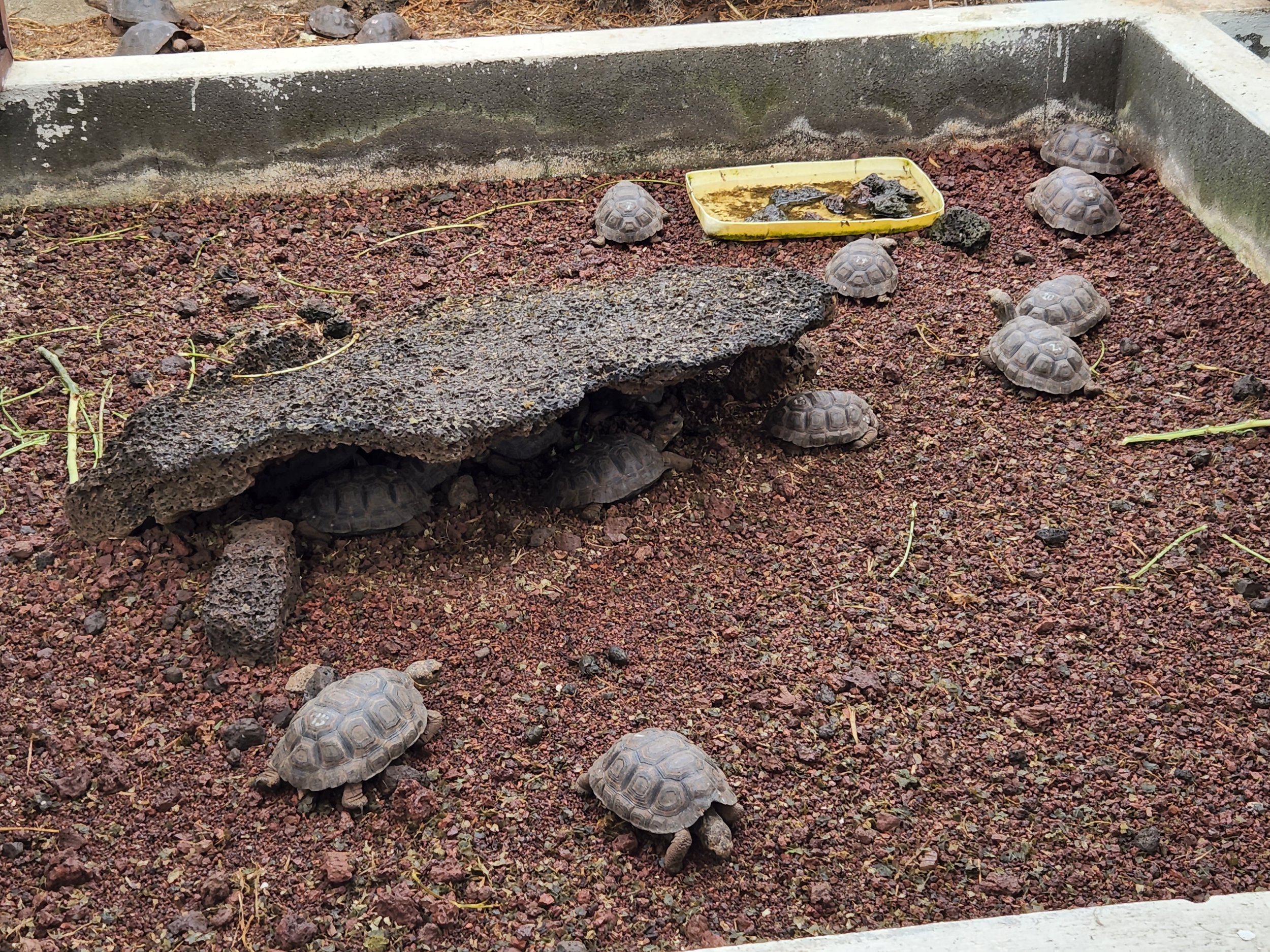
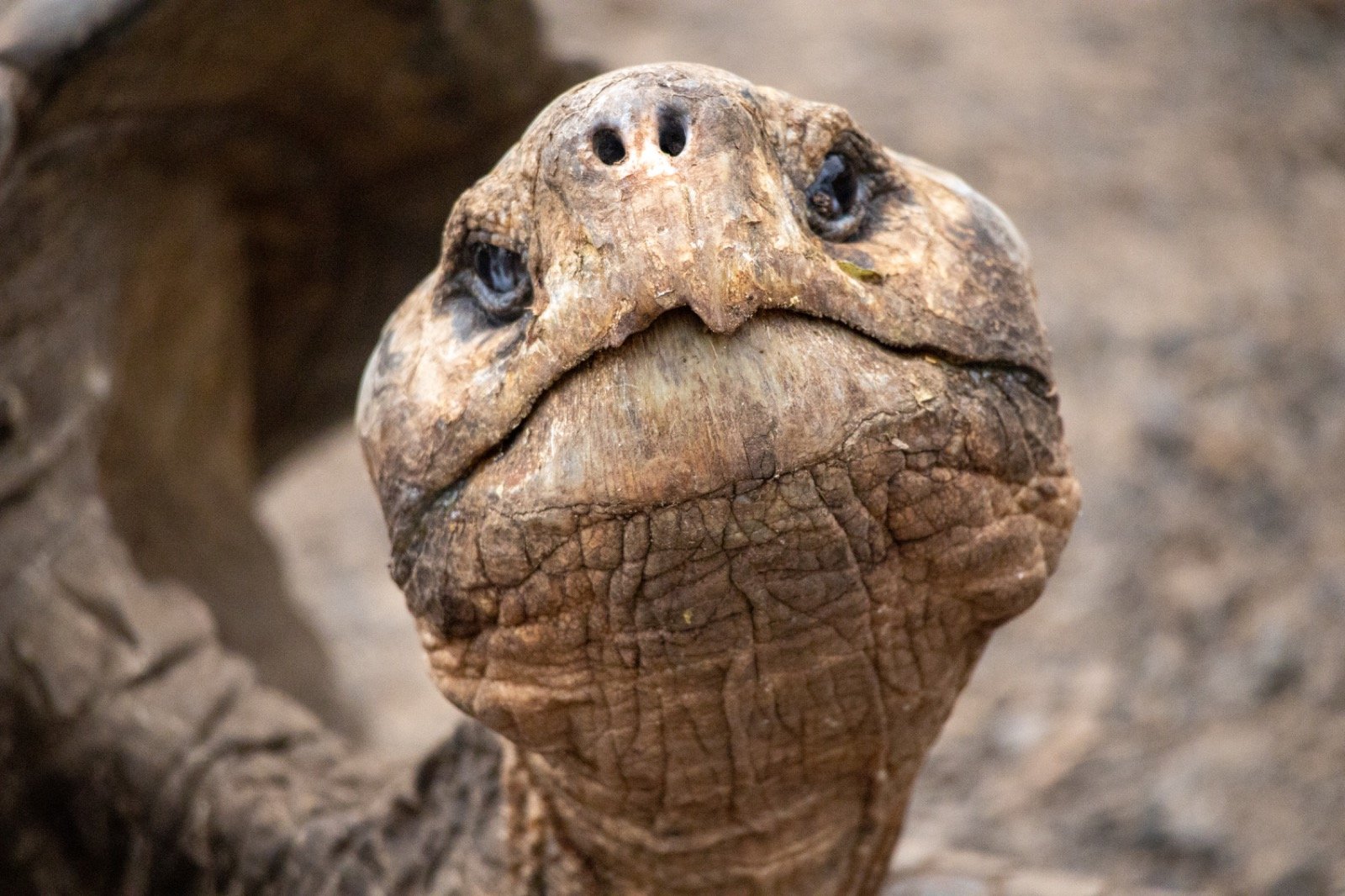
Human Impact
Around 30,000 people live in the Galapagos
The Islands receive around 270,000 visitors a year![8] This is putting pressure on resources and is increasing many environmental threats like overfishing, pollution, deforestation, climate change, and the introduction of invasive species. Man-made structures and changes have been the biggest factors affecting the size of animal and plant populations since the Islands were first discovered in 1535.[9]
To meet the demands of the growing human population in the Galapagos, parts of the humid zones have been cleared for farming. This reduces the resiliency of the ecosystem, which is very sensitive to change and is less able to cope with environmental threats.[10]
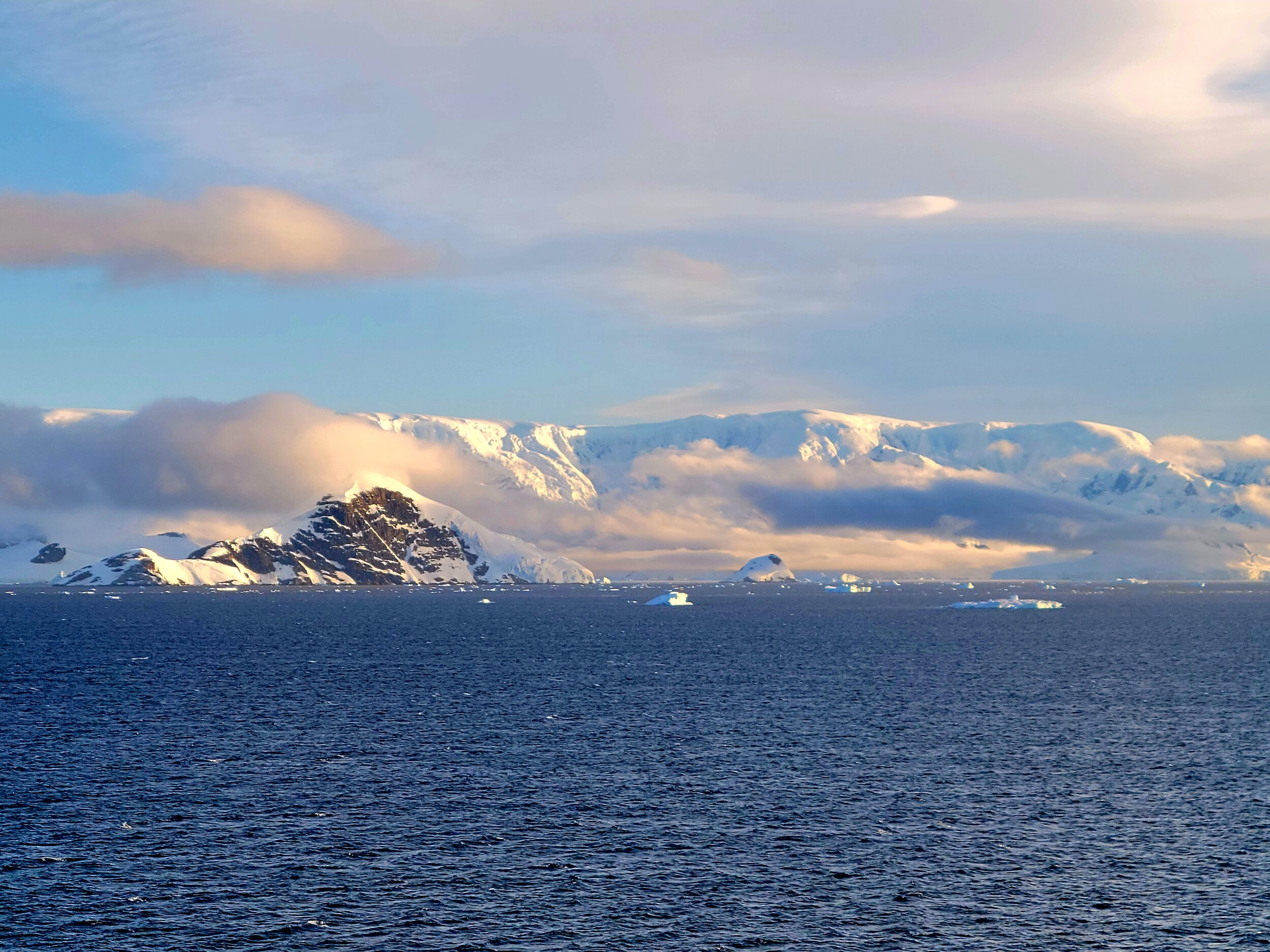
[1] Galápagos Conservancy. “The 487-Year Anniversary of the Discovery of Galápagos | Galápagos Conservancy.” Galápagos Conservancy, 26 May 2022, www.galapagos.org/newsroom/the-487-year-anniversary-of-the-discovery-of-galapagos/#:~:text=Tom%C3%A1s%20de%20Berlanga%20officially%20discovered,arriving%20at%20these%20magnificent%20islands.
[2] “Marine Iguana | National Geographic.” Animals, www.nationalgeographic.com/animals/reptiles/facts/marine-iguana.
[3] “Marine Iguana - Galapagos Conservation Trust.” Galapagos Conservation Trust, 23 Feb. 2024, galapagosconservation.org.uk/species/marine-iguana.
[4] Wildlife of the Galápagos | IGTOA | Galápagos Islands Travel and Tours. www.igtoa.org/travel_guide/wildlife.
[5] Galápagos Conservancy. “Giant Tortoise Restoration in the Galápagos Islands | Galápagos Conservancy.” Galápagos Conservancy, 29 June 2022, www.galapagos.org/conservation/giant-tortoise-restoration.
[6] “Restoring Existing Tortoise Populations.” Galapagos Conservancy, Inc., old.galapagos.org/conservation/our-work/tortoise-restoration/restoring-existing-populations.
[7] ---. “Giant Tortoise Restoration in the Galápagos Islands | Galápagos Conservancy.” Galápagos Conservancy, 29 June 2022, www.galapagos.org/conservation/giant-tortoise-restoration/#:~:text=Others%2C%20while%20vulnerable%20or%20threatened,be%20a%20lon]8g%2C%20slow%20process.
[8] “Travelling Responsibly - Galapagos Conservation Trust.” Galapagos Conservation Trust, 4 Aug. 2023, galapagosconservation.org.uk/about-galapagos/travelling-responsibly.
[9] “Environmental Threats - Discovering Galapagos.” Discovering Galapagos, 16 Aug. 2016, www.discoveringgalapagos.org.uk/discover/life-on-the-islands/ecology-and-habitats/environmental-threats.
[10] “---.” Discovering Galapagos, 16 Aug. 2016, www.discoveringgalapagos.org.uk/discover/life-on-the-islands/ecology-and-habitats/environmental-threats/#:~:text=To%20meet%20the%20demands%20of,to%20cope%20with%20environmental%20threats.








